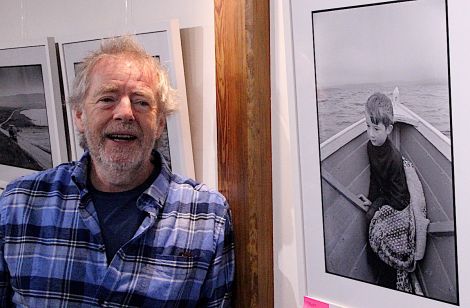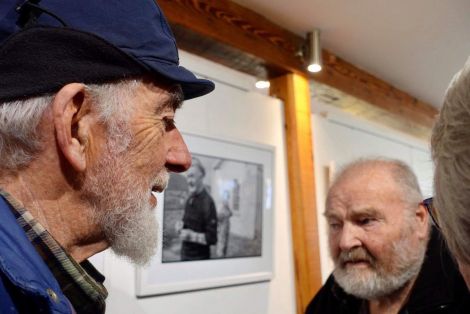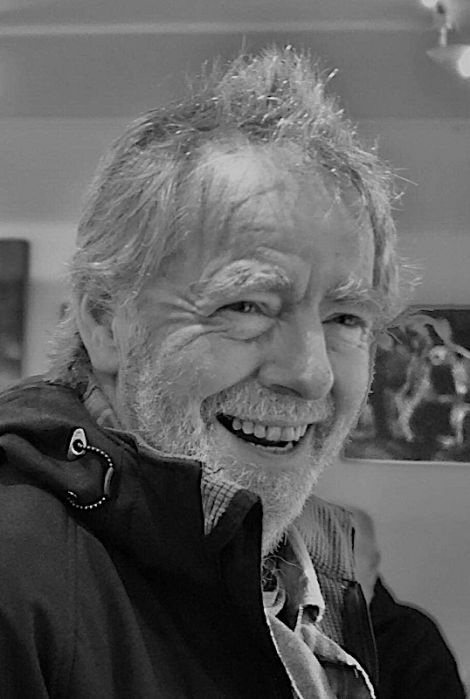Reviews / Stark and unconventional images of Shetland in the midst of the oil boom
IT’S been 41 years since the first oil arrived at Sullom Voe Terminal from the oil rich East Shetland Basin.
The late 1970s was a time of immense change for Shetland as the slow-paced way of life and the old traditional ways of small-scale crofting and fishing were overwhelmed by the arrival of the industrial giants of the oil industry.
The oil boom marked an explosion in the social, economic and cultural lifestyle of Shetland, the effects of which we are still trying to navigate through today.
In the midst of this black gold rush, a young photographer from Edinburgh called Tom Kidd arrived on Shetland’s shores to capture on film the tsunami of incomers who descended upon Shetland seeking riches from this new wild west.
Armed with a camera and a bursary from Kodak, Tom travelled around the isles taking over 1,000 pictures and capturing images of island life where cultural tradition and the trappings of modern consumerism were wrestling to co-exist.
Using Tri-X Kodak black and white photographic film gave a raw, gritty realism to his pictures of the old Shetland, of folk building haystacks, cutting peats and hauling creels in peerie boats alongside the new Shetland of huge oil tankers, grey steel construction sites and a carving of the landscape to accommodate heavy industry.
Tom published a selection of these pictures in 1980 in his book Life in Shetland (Paul Harris Publishing), which, although now a classic body of work, met with mixed reviews when it was first printed. The New Shetlander reviewer at the time found that “Tom Kidd makes Shetland look like war torn Poland.”
The images were certainly stark and unconventional in that they portrayed the everyday realities of life in Shetland and not the glossy, stunning landscaped prints more commonly representing island life.
Become a member of Shetland News
The book went on to sell many copies and some of the images were given a new lease of life in 2004 when Tom Morton and Tom Kidd jointly published the book Black Gold Tide – 25 years of Oil in Shetland, which also included personal reflections from local people and their stories of the oil coming to Shetland.
Some of the photos are now on display until the 17 November at the Weaving Shed Gallery in Hillswick in an exhibition called Tom Kidd – Shetland. It features 31 framed photos and a selection of mounted prints.
Organised by Tom Morton and the Northmavine Community Development Company, the exhibition opened on Saturday with a question and answer session by former news reporter Jonathon Wills and Tom Kidd.
Tom said his photos were bringing “back memories of a very special time in Shetland”, and added: “I was fairly clueless about what I wanted to get image wise, I just wanted to take pictures.”
After working as a newspaper photographer for 25 years, Tom is now a helicopter pilot.
When asked what he felt the main change is between life today and life in 1980s Shetland, Tom felt the biggest difference was that “there’s far more big houses, more prosperity due to oil but also other things like aquaculture that has brought in jobs and money.”
The oil rush may now be a memory in Shetland’s history but the long-term effects of the black gold saturating our daily lives and our shores with mountains of plastic waste is a picture no one could have foreseen in 1980.
Tom Kidd’s photos stand as testament to the over riding strength of community which continues to thrive on the isles and the small strands of crofting, knitting and fishing that continue to quietly flow through the veins of Shetland culture.
Tom Kidd – Shetland is at the Weaving Shed Gallery, Hillswick, open 2-6pm daily until 17 November. Many more images of Tom’s time in Shetland can be found at his website www.tomkiddphotography.co.uk
Alex Purbrick
Become a member of Shetland News
Shetland News is asking its many readers to consider paying for membership to get additional features and services: -
- Remove non-local ads;
- Bookmark posts to read later;
- Exclusive curated weekly newsletter;
- Hide membership messages;
- Comments open for discussion.
If you appreciate what we do and feel strongly about impartial local journalism, then please become a member of Shetland News by either making a single payment, or setting up a monthly, quarterly or yearly subscription.




























































